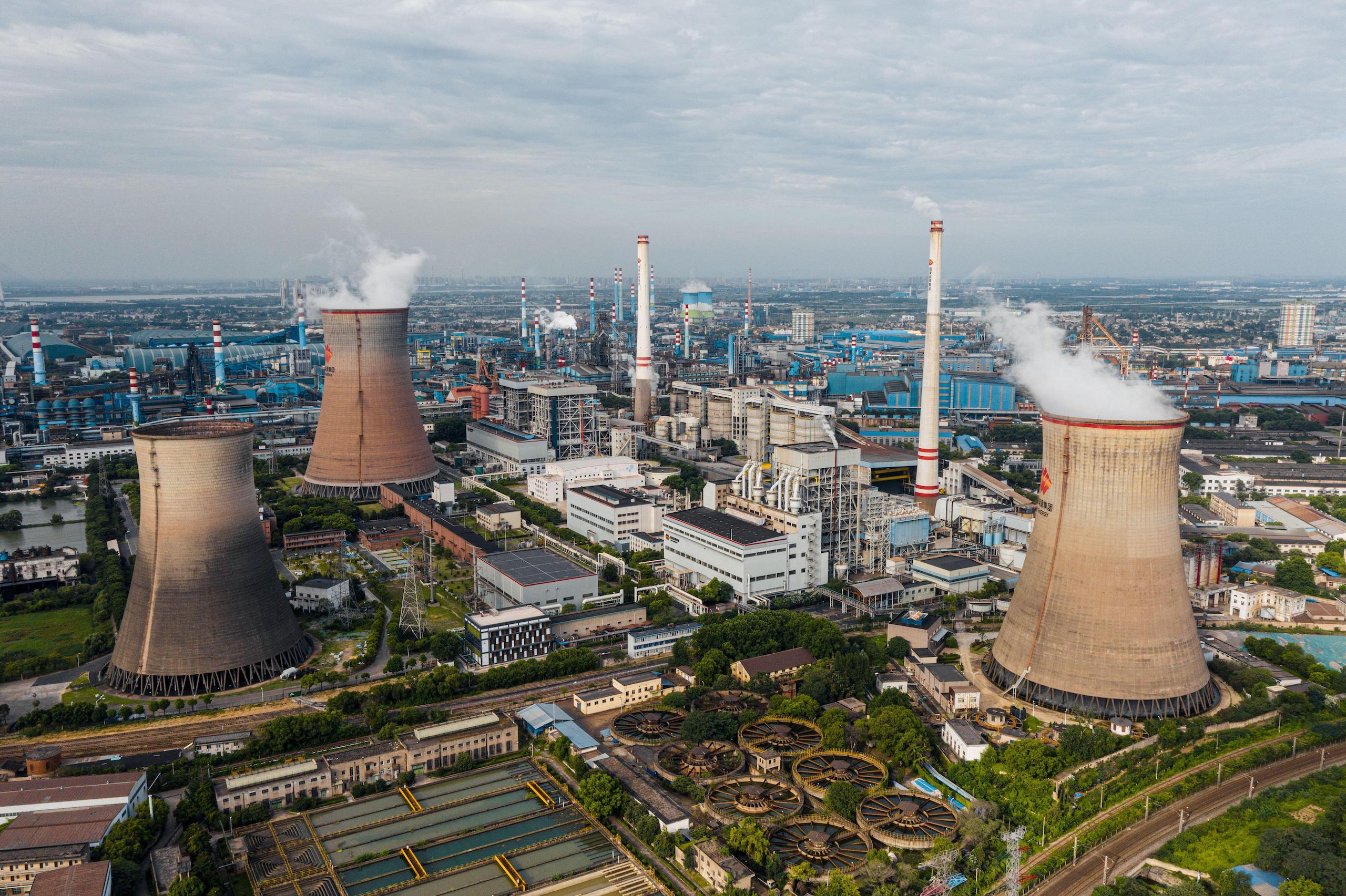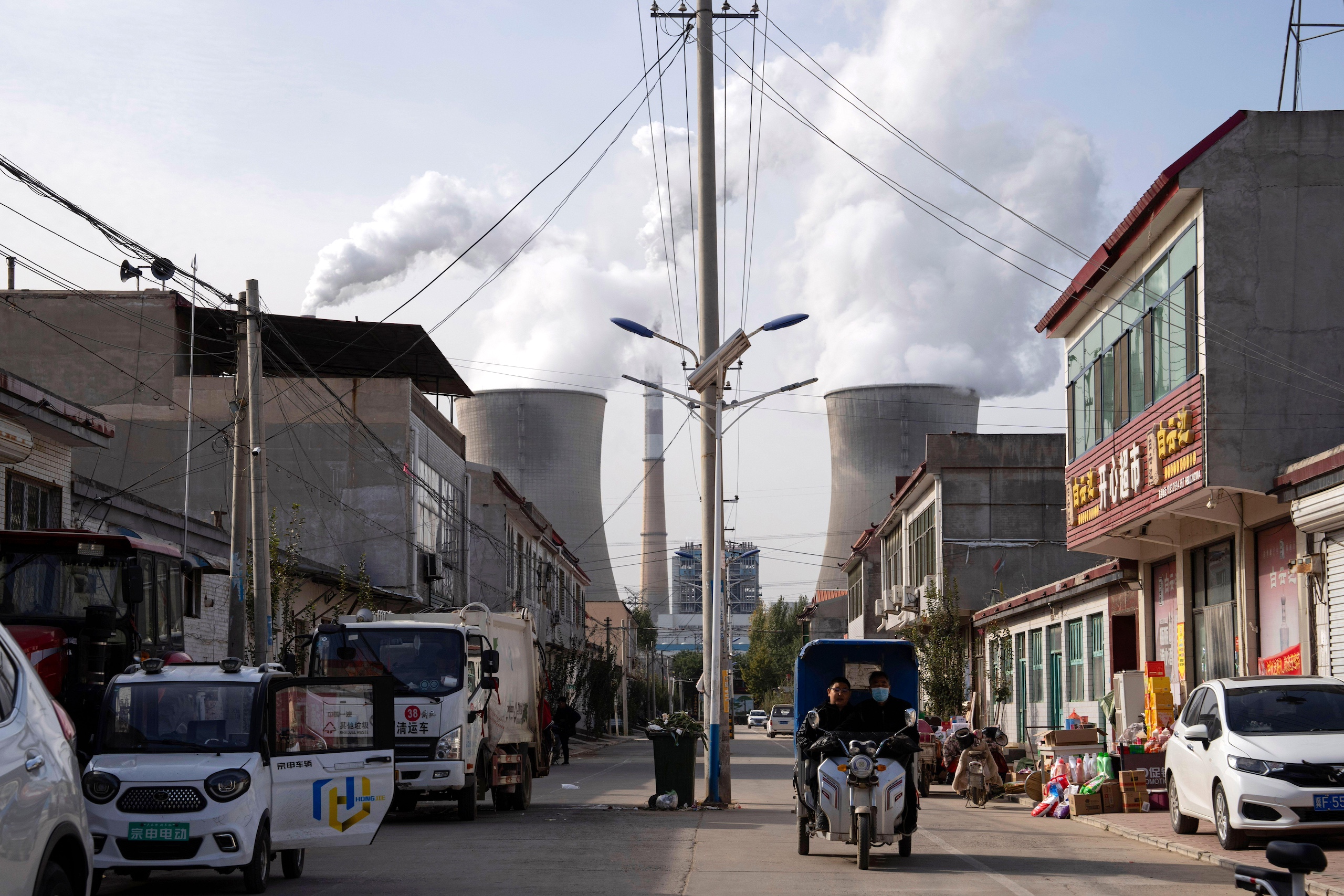Decarbonisation upgrades to China’s coal power plants will accelerate according to a 7 July government action plan. “Coal power still has a role to play in ensuring electricity supplies for a certain period of time,” it stated.
For years, China has been expanding its renewable-power generation faster than any other country. It accounted for roughly 63% of the world’s new wind and solar capacity in 2023, and 40% of cumulative installed capacity. In June, the International Energy Agency predicted that by 2030, China’s installed renewable capacity would approach 3,200 gigawatts (GW), or 2.5 times the 2022 level.
But neither the speed nor scale of this expansion has halted the growth of coal power. In April, a report by Global Energy Monitor found China had approved 200 GW of new coal power since 2022. The percentage growth in national coal consumption in 2023 exceeded the global figure, attracting widespread attention from the international community. There are three reasons for this, and they relate to three underlying challenges. First, other sources of energy cannot yet satisfy growing power demand. Second, there is a shortage of sources of electricity that are clean but also able to provide operational flexibility. Third, the development of technology to provide heat from clean energy is lagging.
This article will explore the situation and possible solutions, using Shandong as an example. The north-eastern province has China’s largest installed solar capacity, and second-largest installed coal-power capacity and electricity demand. It also needs more heat for its residential and industrial sectors than any other province. Currently, it gets most of this from combined heat-and-power plants fired by coal.
Ensuring supplies: Huge and growing demand for electricity
In 2023, 9,220 terawatt hours (TWh) of electricity were used across China, 6.7% more than in 2022. This was about twice as much as in the United States (4,267 TWh) and 3.5 times the European Union (2,696 TWh), according to data analysed by European think-tank Ember. Usage in Shandong alone was 797 TWh, or 1.5 times that of Europe’s biggest electricity user, Germany (514 TWh).
Electricity usage in the US and developed EU nations is holding steady, or even falling. In China, it is still growing, by an average of 5.7% a year between 2013 and 2023, according to Ember. This compares to growth of 0.4% a year in the US, and falls of 0.7% a year in the EU as a whole and 1.5% in Germany. China saw year-on-year growth in electricity use of 8.1% in the first half of this year, with growth for the whole year expected to be 6.5%, according to China Electricity Council. This increase would be more than Germany’s current total electricity consumption.
Such high growth, and from such a high starting point, means non-coal sources of power – renewable, nuclear and gas included – cannot satisfy the increase in demand: China still needs a small amount of new coal power to bridge the gap. About 314 GW of new, non-coal installed capacity (accounting for over 85% of all newly installed capacity) was added in 2023, according to China Electricity Council. Wind and solar accounted for the lion’s share of that (almost 300 GW). Still, that was not enough to meet growth in demand of 576 TWh. So, 40 GW of coal power was also installed in 2023. That translated to a 290 TWh increase in coal-generated electricity, meeting half of the overall growth in demand.
Peak regulation: A lack of flexible resources
By the end of June this year, China’s wind and solar power accounted for around 40% of installed generating capacity and around 20% of electricity generated. Both figures have more than doubled over the past five years. This means the grid needs additional flexibility to cope, because renewable generation fluctuates with the weather. In Shandong, the rapid expansion of solar has transformed the electricity system from concentrated and stable to distributed, fluctuating, and requiring more active management.
Unlike the US and EU, China has fewer gas-fired power stations that can quickly adjust output and reliably respond to peaks in power demand. They also emit less CO2 per unit of power generated than coal plants. According to Ember, gas power accounted for only 5% of China’s installed capacity in 2023, far below the US (42%), UK (36%) and Germany (14%). Germany has 82 GW of solar backed by 34 GW of gas whereas Shandong has 60 GW and 0.6 GW respectively. The province has little choice but to rely on its 100 GW of coal power to provide flexibility, with those plants stopping and starting dozens of times a month to meet demand.
China is speeding up its deployment of batteries and pumped-storage hydropower to provide clean-energy flexibility. However, the former have limited storage capabilities, and the latter involves long construction periods. These technologies will not replace coal as a provider of flexibility in the near- or mid-term. So, this January, China’s National Development and Reform Commission published guiding opinions on adding peak regulation and storage capacity, as well as smarter dispatch mechanisms. The first point addressed more flexibility upgrades for coal power, with all changes to the existing fleet to be completed by 2027.
Heat provision: Northern China needs warmth
Coal is still China’s biggest source of heating, particularly in the north, where it provides the bulk of residential heating. In 2022, 55% of urban buildings in northern China were heated by coal-fired combined heat-and-power plants. Add in those buildings heated by coal-fired boilers and you reach 70%. Industry, which requires high temperatures to ensure quality and efficiency in certain industrial processes, is even more coal reliant.
In some places, the need for heat has become a key obstacle to coal phase-out. Shandong is currently working to shut down coal power units of less than 300 MW in size, but these provide more than 80% of the province’s heating. By contrast, gas is the largest energy source for heating in countries such as the US (78% in 2022) and Germany (47%). Moreover, the total heating demands in these two countries is small, less than 10% that of China.
Research published this June by Peking University’s Institute of Energy (where one of this article’s authors works) found that if Shandong continues to use coal and gas as its main sources of heat, it will be able to phase out less than 30 GW of coal power by 2050. However, a bigger roll-out of nuclear and biomass power for heating would mean only 6 GW of coal power would need to be retained by that point. In this scenario, 95% of Shandong’s coal-power fleet can be phased out.
A faster phase-out demands joined-up policy
The speed and extent of a coal power phase-out requires effective replacements for the electricity, heat and flexibility it provides. Opinions on possible roadmaps vary between research institutions. For example, some research has found China will still need over 800 GW of coal power in 2060. Other research has said a complete phase-out is possible by 2040.
To cut reliance on coal more quickly and ensure an early peak in coal-power generation, China will need a comprehensive and systematic approach to build a new power and energy system. One way to avoid building new coal power plants is to utilise existing ones more. Utilisation hours are calculated by dividing power generated during a given period by the total capacity of the relevant equipment. While for coal power this metric was falling during China’s 14th Five Year Plan period (2016-2020), it has increased more recently, from 4,323 in 2020 to 4,685 in 2023. But there is still room for improvement – 5,000 hours would be a suitable goal.
China also needs to speed up growth in clean-energy sources, including renewables and nuclear. This will support the aim of tripling total renewable generation by 2030 (compared to 2022 levels) and of meeting all extra demand with non-coal sources of power.
For flexibility, alongside increasing the construction of energy storage and peak-power generation facilities, there should be more power cooperation between regions, and more use of “demand-side response”.
China’s relatively rigid inter-provincial and inter-regional power-transmission agreements need to be changed. Utilisation hours should not serve as a sole assessment and evaluation indicator for the effectiveness of transmission channels. And a market-based mechanism for power trading should be established.
As for demand-side response, flexible pricing and monetary incentives could be used to encourage consumers to shift their electricity use to times when renewable power is more abundant or overall demand is lower.
New business models, such as distributed energy and battery storage, should be developed further to implement the requirements of “supply-and-demand coordination” in the new power system. Local balancing and absorption of volatile new energy through market-driven, huge demand-side response capabilities can help reduce pressure on the power grid and improve economic efficiency. For example, with the rapid increase in the number of electric vehicles, orderly charging and vehicle-grid integration (V2G) can greatly reduce the high costs of energy storage and coal-power construction. All of these require further reform of the power market to enable real-time spot prices, which would realise the market’s basic function of resource allocation.
Regarding heat generation, particularly in provinces heavily reliant on coal power for it, a “bundle” of clean-heat technology should be deployed. For example, the lower levels of heat required for residential buildings can come from heat pumps, nuclear power, geothermal power and industrial heat leftovers. The high-temperature steam needed by industry can come from gas, solid biomass, small modular nuclear reactors or hydrogen. In the future, China needs to strengthen research into cleaner heating technology, including nascent large-scale heat-storage solutions. It needs to clarify the appropriate circumstances for the use of different options and provide technical and service standards for each one. A list of different options, including combined or complementary solutions, should be provided. The list should compare costs, operating expenditure, functional characteristics and environmental performance, so consumers can make informed choices. This will ensure good-quality, affordable heating.
In terms of large-scale, cross-seasonal energy storage, in addition to hydrogen energy and its derivatives, large-scale heat-storage technology has also emerged.
We believe that with the development of “new quality productive forces” driven by technological progress and the corresponding changes in production relations, new business models will surely emerge.
This concept, introduced by President Xi Jinping in 2023, involves China speeding up the shift from an economic model heavily reliant on inputs of natural resources and energy towards one centred on innovation. It aims for a gradual reduction of dependence on traditional engines of growth such as infrastructure construction, real-estate investment and low-cost manufacturing and exports.
This will promote the rapid formation of a new power system that is clean, low-carbon, safe, abundant, economical and efficient, coordinated between supply and demand, flexible and intelligent.









